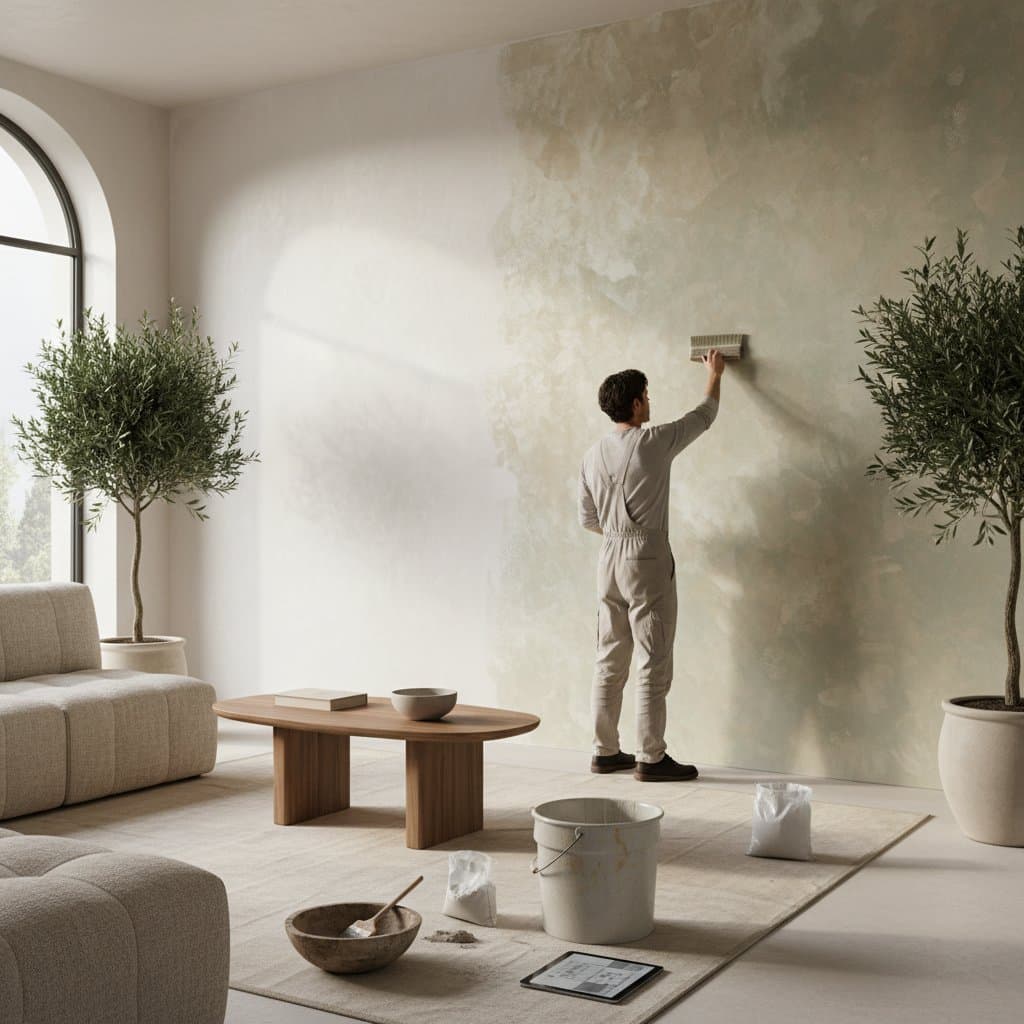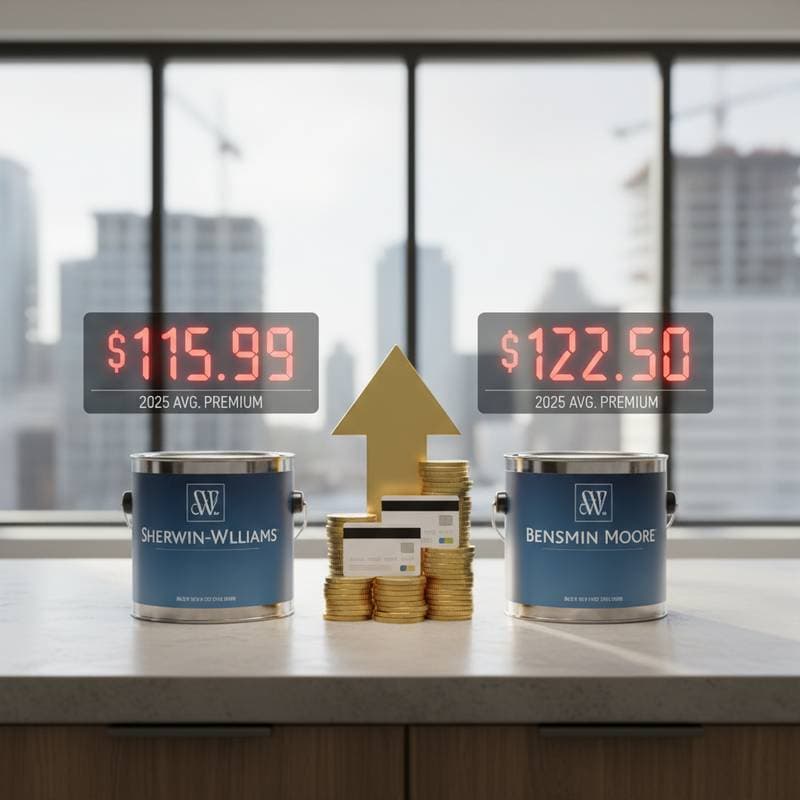Terracotta Paint: Evaluating the $350 Per Gallon Investment
Terracotta paint captures a warm, earthy essence that elevates interior spaces. This color, inspired by baked clay, transitions from traditional accents to bold wall applications. Premium brands charge up to $350 per gallon for select terracotta shades, prompting questions about value. This article examines the appeal of terracotta, the benefits of high-end formulations, and strategies to incorporate the hue across various budgets.
The Appeal of Terracotta in Design
Terracotta derives its name from the Italian term for baked earth, evoking a sense of natural warmth and stability. In contemporary interiors, it counters the prevalence of cool neutrals with its inviting depth. The color enhances comfort while connecting spaces to organic elements like clay and stone.
Natural light amplifies terracotta's subtle glow, creating dynamic shadows. Artificial lighting reveals its layered tones, from soft amber to deeper rust. Designers value its versatility for walls, cabinetry, and ceilings, where it adds sophistication without overwhelming the palette.
Components of Premium Terracotta Paint
High-end terracotta paints justify their cost through superior composition and performance. These formulations prioritize pigment quality and binder integrity for optimal results. Coverage improves, reducing the need for multiple coats and ensuring uniform application.
Key differentiators include:
- High Pigment Concentration: Natural oxides and minerals produce vibrant, multidimensional color that avoids flatness.
- Specialized Finishes: Options such as matte, eggshell, or satin provide controlled light reflection and tactile appeal.
- Enhanced Durability: Resistance to fading, scrubbing, and wear extends the paint's lifespan in high-traffic areas.
- Environmental Standards: Low volatile organic compound levels and sustainable sourcing support healthier indoor environments.
These features deliver a professional finish that enhances perceived quality.
Achieving Terracotta Effects on a Budget
Effective design accommodates all financial levels through strategic choices. Preparation and complementary elements can mimic luxury results without premium costs.
Under $100 per Gallon
- Select mid-tier brands with color-matching capabilities to replicate desired shades accurately.
- Apply a tinted primer matching the terracotta tone to minimize streaks and enhance depth.
- Incorporate manual techniques, such as sponging or light texturing, to add visual interest.
$100 to $200 per Gallon
- Opt for collections developed in collaboration with designers, which balance affordability and refinement.
- Use premium application tools, including high-density rollers and angled brushes, for smoother results.
$350 per Gallon and Above
- Limit usage to focal areas, such as accent walls or architectural features, to maximize impact.
- Combine with textured surfaces like plaster or wood paneling to heighten the color's inherent warmth.
Textures such as linen, wicker, or woven fabrics complement terracotta universally, fostering an intentional aesthetic.
Performance in Varied Lighting Conditions
Terracotta maintains consistency across lighting scenarios, a trait appreciated in both residential and media settings. It retains warmth without shifting to unintended undertones like orange. The hue flatters surrounding elements and supports clear visual contrast.
To evaluate suitability, prepare a large sample board and observe it in different times of day. This reveals shifts from morning vibrancy to evening subtlety. Pairings with crisp whites, forest greens, or metallic accents enhance its adaptability for modern or classic schemes.
Complementary Materials and Finishes
Terracotta integrates seamlessly with natural materials, amplifying its grounded character.
Effective pairings include:
- Matte terracotta walls with polished concrete flooring for a blend of rustic and sleek elements.
- Terracotta-painted cabinetry accented by brass fixtures to harmonize metallic warmth.
- Terracotta ceilings against neutral walls for subtle drama.
- Textured terracotta surfaces with cane or rattan details to introduce organic patterns.
In cooler palettes, terracotta contrasts effectively with blues or sages, suiting transitional spaces like hallways or studies.
Strategic Considerations for Color Selection
From a professional standpoint, luxury paints represent an investment in durability and aesthetic precision. For projects requiring longevity, such as commercial spaces or high-visibility homes, the expense aligns with expected performance. Sourcing strategies, including bulk purchases or sample testing, optimize value.
Terracotta conveys narratives of craftsmanship and sustainability, ideal for branding in retail or hospitality. Its emotional resonance fosters enduring appeal in curated environments.
Application Techniques for Optimal Results
Proper execution ensures terracotta's full potential. Surface preparation forms the foundation for flawless coverage.
Recommended steps:
- Surface Preparation: Clean thoroughly and sand to achieve a smooth base free of debris.
- Primer Application: Use a tinted primer to promote even adhesion and color payoff.
- Paint Mixing: Stir pigments consistently to maintain uniformity throughout the project.
- Sectional Painting: Apply in manageable areas, feathering edges while wet to eliminate visible lines.
- Curing Time: Allow full drying between coats to prevent adhesion issues.
Sheen selection influences outcomes: matte conceals minor flaws, while satin highlights clean lines. For temporary applications, consider removable options like adhesive panels in terracotta patterns.
Integrating Terracotta into Daily Spaces
Terracotta evolves with its surroundings, gaining patina that enhances character. It anchors minimalist setups with plants and soft illumination, adding layers of warmth. In established homes, it highlights moldings and intimate areas.
Seasonal updates maintain freshness: light neutrals and foliage in summer, deeper tones and textures in winter. The color supports diverse styles, from eclectic to streamlined, offering flexibility.
Repainting proves straightforward if preferences change, though many retain it for its comforting presence.
Essential Strategies for Terracotta Implementation
- Conduct lighting tests with samples to confirm tonal accuracy.
- Prioritize quality tools to elevate standard paints to professional standards.
- Balance with neutrals and organics to prevent visual overload.
- Maintain surfaces with mild solutions to preserve finish integrity.
- View premium options as long-term assets for sustained quality.
Terracotta transcends trends, embodying enduring warmth and authenticity. Accessible through varied approaches, it transforms spaces into personalized sanctuaries of comfort and style.



